Janice Steinberg's Blog
January 5, 2024
Thou Shalt Afflict Thy Protagonist
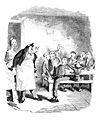
George Cruikshank engraving
It happened again yesterday. A friend in my writers group kept taking her protagonist into situations that made everyone squirm … but then backed off. For instance … The character is an immigrant maid, and the house in which she works gets sold. She meets the new owner, including his flirtatious twenty-something son. The maid is staying in the house alone just before the new owners move in, and the son shows up in the middle of the night. She throws a shawl over her nightgown and lets him in. He pours himself a glass of brandy and offers one to her. Why not? she thinks. Uh-oh, we know what’s coming. But it doesn’t! She drinks her brandy, returns to her room, locks the door, and spends a peaceful night, her virtue unassailed.
Granted, the young aristo putting a mash on the maid is a cliché, and that, my friend said, was why she didn’t want to go there. But just about everything and everyone in the protagonist’s life is nice. That’s a problem, and not just because “niceness” is antithetical to drama. A character grows through facing adversity. That means you have to put your beloved protagonist through the wringer.
As screenwriting guru Robert McKee says in Story, “True character is revealed in the choices a human being makes under pressure – the greater the pressure, the deeper the revelation, the truer the choice to the character’s essential nature.”
The characters we love must be unfairly accused, cheated in love and in business, press-ganged, betrayed, tricked, thrown into excruciating social situations, saddled with unbearable family members, threatened, laughed at, imperiled, spurned, one-upped, opposed, dragged through the mud, humiliated, misunderstood, pummeled, starved. (Depending on the kind of book you’re writing, this suffering may be literal, or it may be purely psychological). We need to subject our protagonists to experience loneliness, anxiety, misery, loss.
If your gentle writerly self balks at being so cruel, consider: what if, when Oliver Twist asked, “Please, sir, I want some more,” a kindly soul had smiled and filled his bowl? A happier life for young Oliver. For the rest of us, deprivation.
Tags: characters, fiction, novel writing, plotting, protagonist, writing
This entry was posted
on Thursday, November 7th, 2013 at 12:28 am and is filed under The Writing Life.
You can follow any responses to this entry through the RSS 2.0 feed.
Both comments and pings are currently closed.
Comments are closed.
Search for:Subscribe Click Here to Subscribe to The Writing LifeRecent Posts Opening the Door to Self-Compassion Reading with Reverence – A Subversive Act If Not Hillel, Who? Rabbi Lawrence Kushner: A Dance Review Yikes, I’ve Been Studied! Recent CommentsSally on 7 Rules to Write By – #6: Choose your agent carefullyThelma Virata de Castro on The Wisdom of the Burnout SistersJanice on Happy Birthday to The Tin Horse!Diane Elliot on Happy Birthday to The Tin Horse!Thelma Virata de Castro on Happy Birthday to The Tin Horse!ArchivesJuly 2015January 2015September 2014August 2014June 2014May 2014April 2014March 2014February 2014January 2014December 2013November 2013October 2013September 2013August 2013July 2013June 2013May 2013April 2013March 2013February 2013January 2013December 2012November 2012CategoriesThe Writing Life
Where Do You Get Your Ideas
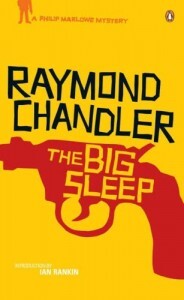 I’ve heard authors say that their least-favorite question is “Where do you get your ideas?” Not me. For one thing, I am not one of those writers who keeps a file box (or the electronic equivalent) bulging with ideas, so that the minute I finish one project, there are 18 others – all brilliant, of course – clamoring for my attention. Book ideas come to me one at a time, and when they show up, I notice. I always feel like raising a flag and doing a few Rockette kicks when a new one appears.
I’ve heard authors say that their least-favorite question is “Where do you get your ideas?” Not me. For one thing, I am not one of those writers who keeps a file box (or the electronic equivalent) bulging with ideas, so that the minute I finish one project, there are 18 others – all brilliant, of course – clamoring for my attention. Book ideas come to me one at a time, and when they show up, I notice. I always feel like raising a flag and doing a few Rockette kicks when a new one appears.
Plus, in the case of “The Tin Horse,” I love telling the story of how the light bulb came on in my head. In a terrific New Yorker article about women readers, Joan Acocella writes about “watershed books” that get you through a rough time. In a survey of Brits mentioned in the article, their hard-time books were lit-class fare like “Pride and Prejudice” and “One Hundred Years of Solitude.” My watersheds were the (equally literary, IMHO) noir mystery novels of Raymond Chandler and Dashiell Hammett, which I read and reread during a time when I felt a deep need to identify with protagonists who were tough and fearless.
Alas, reading noir fiction did not make me tough or fearless. In those stories of hard-boiled men and fast women, I found just one character with whom I identified in any meaningful way: an unnamed woman in Chandler’s “The Big Sleep.” Philip Marlowe, the detective, wants information about a sleazy Hollywood bookseller. He goes to a legitimate bookstore nearby, flashes a badge at the woman working there, and starts asking questions. And she and Marlowe engage in this crisp intellectual parrying in which she gives as good as she gets. BTW, don’t expect to find this in the film, in which she’s just one more fast woman who happens to wear glasses.
In the novel, the woman is reading a law book, which is pretty intriguing given that “The Big Sleep” was published in 1939. But what really grabbed me was the way Chandler introduced her: “She had the fine-drawn face of an intelligent Jewess.” That word, Jewess, suggested an irremediable otherness. And it made me want to know about this nameless woman. What was her story? What was her Los Angeles?
Eventually, I gave the woman a name: Elaine Greenstein. And a Los Angeles: Boyle Heights. And a story: “The Tin Horse.”
This entry was posted
on Monday, November 5th, 2012 at 10:32 pm and is filed under The Writing Life.
You can follow any responses to this entry through the RSS 2.0 feed.
Both comments and pings are currently closed.
December 7, 2012 at 1:34 am
It’s amazing how something so seemingly minor could inspire such a richly realized other life!
I’d also never thought about “hard time” books,but I definitely have those. I also find stories inspiring relationships- for example, I read Anne Tyler’s AN AMATEUR MARRIAGE and was reminded so much of my marriage, but also ended, after finishing the book, thinking how glad I was to still be married to mine.
I’m thinking about tough and fearless women myself as I work on my samurai woman novel:)
Jack Cassidy says:December 7, 2012 at 5:10 am
Nice blog. I love the embedded scene. Nice site – very classy looking!
Meg Bortin says:December 7, 2012 at 10:44 am
Janice, this is such an interesting tale of literary inspiration. Cannot wait to read the book!
Search for:
Subscribe Click Here to Subscribe to The Writing LifeRecent Posts Opening the Door to Self-Compassion Reading with Reverence – A Subversive Act If Not Hillel, Who? Rabbi Lawrence Kushner: A Dance Review Yikes, I’ve Been Studied! Recent CommentsSally on 7 Rules to Write By – #6: Choose your agent carefullyThelma Virata de Castro on The Wisdom of the Burnout SistersJanice on Happy Birthday to The Tin Horse!Diane Elliot on Happy Birthday to The Tin Horse!Thelma Virata de Castro on Happy Birthday to The Tin Horse!ArchivesJuly 2015January 2015September 2014August 2014June 2014May 2014April 2014March 2014February 2014January 2014December 2013November 2013October 2013September 2013August 2013July 2013June 2013May 2013April 2013March 2013February 2013January 2013December 2012November 2012CategoriesThe Writing Life
Yikes Ive Been Studied
 I had no idea I was “mak(ing) clear how well popular culture can entertain nostalgia, trivialize history, and relieve, without really working through, the traumas of the past.” Turns out that’s what Laurence Roth, a professor of English and director of the Jewish Studies program at Susquehanna University, wrote about a mystery story of mine. Roth’s very cool “Inspecting Jews: American Jewish Detective Stories” came out from Rutgers University Press in 2004. I became aware of it just two weeks ago, through one of those delightful chains of connection that sometimes happen in life.
I had no idea I was “mak(ing) clear how well popular culture can entertain nostalgia, trivialize history, and relieve, without really working through, the traumas of the past.” Turns out that’s what Laurence Roth, a professor of English and director of the Jewish Studies program at Susquehanna University, wrote about a mystery story of mine. Roth’s very cool “Inspecting Jews: American Jewish Detective Stories” came out from Rutgers University Press in 2004. I became aware of it just two weeks ago, through one of those delightful chains of connection that sometimes happen in life.
My short story, “Wailing Reed,” involves a missing klezmer musician, a young clarinetist for a group I named Klezmania. An older man, a dealer in rare klezmer recordings, asks detective Margo Simon to search for him. The story was published in the collection “Mystery Midrash,” edited by Lawrence W. Raphael.
I was inspired to write the story by my love of klezmer, the wild and crazy music of Eastern European Jews. Back when immigrants were all assimilating, klezmer became one of the strands of American jazz via cats like Benny Goodman and Artie Shaw. More recently, there’s been a klezmer revival featuring amazing groups like the Klezmatics, the Klezmer Conservatory Band, Brave Old World, Kol Simcha, and, in San Diego, Yale Strom and Hot Pstromi. (If you want to know more about klezmer, check out Ari Davidow’s Klezmer Shack.)
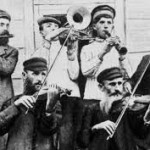 I became aware of klezmer for the first time in the early 1980’s, when I heard the Big Jewish Band, led by Ron Robboy. At least, I think that was the first time I heard klezmer. But I felt like I was hearing a long-lost tune, my earliest lullaby. The music grabbed my soul in its fist, and I remember sitting in the audience trying not to sob. BTW, my story opens, “Just because klezmer music made her cry … ”
I became aware of klezmer for the first time in the early 1980’s, when I heard the Big Jewish Band, led by Ron Robboy. At least, I think that was the first time I heard klezmer. But I felt like I was hearing a long-lost tune, my earliest lullaby. The music grabbed my soul in its fist, and I remember sitting in the audience trying not to sob. BTW, my story opens, “Just because klezmer music made her cry … ”
Ron’s path and mine have crossed over the years. He called after he read “The Tin Horse” because he grew up in L.A. and had relatives who’d lived in Boyle Heights. Last week, he called and told me about “Inspecting Jews.” Thanks to the magic of the internet, I found the book and ordered it that day.
“Inspecting Jews” is a fascinating book. Roth takes genre fiction with the seriousness it deserves. He coins the phrase “kosher hybridity” to talk about, as I understand it, a mix of past and present, Jewish and American culture, and “imperfectly remembered Torah.” There are sections on gender (discussing Harry Kemelman and Faye Kellerman), memory, and “alterity” – Jewish otherness.
The section on memory is where he writes about “Wailing Reed,” with its focus on the klezmer revival and rare recordings. He frames the discussion in terms of the commodification of memory, the way we use objects “to put (our) hands physically on the past and take hold of its aura.” And he brings in the intriguing notion of postmemory, a concept developed by Marianne Hirsch, in which people “recollect” a past they haven’t personally experienced but nevertheless connect to deeply through stories, objects, and their imaginations … and where there’s the danger that this imagined past can be distorted.
Writing about “Wailing Reed” and postmemory, Roth says, “By using klezmer as a touchstone for the East European Jewish past, Steinberg’s short story asks readers to consider the mysteries of that past’s emotional and commercial tangibility. Klezmer, as an example of postmemory about Eastern European Jewish life, and as one of the sales champs of the American Jewish popular arts, is a perfect target for criticizing the romanticization and commercialization of the Ashkenazi culture to which klezmer gives voice, literally.”
I can’t say I did any of that consciously! But writing fiction is so intuitive, that to the extent any of those ideas were swirling in my awareness, they bubbled into my characters and the story. Though I also like the idea that none of what Roth sees was even remotely in my mind, and he’s done a jazz-like riff on what I wrote.
One of my favorite pieces of the four pages Roth devotes to the story (almost as long as the story itself!) is this comment about Margo’s visit to a club – part of her search for the missing clarinetist, who also plays in a punk-rock band. Despite feeling impossibly old (in her late 30s) to be there, she ends up liking the music, “an interesting if sometimes weird hybrid of rock and jazz, just as Klezmania’s music combined traditional and modern influences.” That quote is from the story, and I suspect it’s only partly coincidental that I used the word “hybrid” and hybridity is a cornerstone for Roth’s analysis. About this incident, he writes:
“The appeal of both contemporary youth music and the klezmer revival is their weird hybridity, their mixing of dissimilar but not dissonant sounds from the past and from the present. The result is neither nostalgia nor an over-hip smugness, but rather emotionally accessible music that, in the case of Klezmania, is capable of making Simon cry.”
BTW, there’s a good reason Roth particularly appreciated Margo’s response to the punk band. It says in his bio that he was a “guitarist and songwriter in several bands on the L.A. post-punk club circuit” and he still performs with a group with the great name Faculty Lounge.
It’s an amazing experience to hear from someone who’s read my work with care and attention. Any time that happens, it’s a gift. But discovering Roth’s extraordinary engagement with my story is like getting a carload of gifts… all of them exactly what I hoped for. Thank you, Laurence Roth, for your deep attention in “Inspecting Jews.” And thanks, Ron Robboy, for telling me about this wonderful book – and for making music that brought me to tears.
Tags: klezmer, Laurence Roth, mystery, postmemory, Tin Horse
This entry was posted
on Tuesday, June 17th, 2014 at 7:08 pm and is filed under The Writing Life.
You can follow any responses to this entry through the RSS 2.0 feed.
Both comments and pings are currently closed.
Comments are closed.
Search for:Subscribe Click Here to Subscribe to The Writing LifeRecent Posts Opening the Door to Self-Compassion Reading with Reverence – A Subversive Act If Not Hillel, Who? Rabbi Lawrence Kushner: A Dance Review Yikes, I’ve Been Studied! Recent CommentsSally on 7 Rules to Write By – #6: Choose your agent carefullyThelma Virata de Castro on The Wisdom of the Burnout SistersJanice on Happy Birthday to The Tin Horse!Diane Elliot on Happy Birthday to The Tin Horse!Thelma Virata de Castro on Happy Birthday to The Tin Horse!ArchivesJuly 2015January 2015September 2014August 2014June 2014May 2014April 2014March 2014February 2014January 2014December 2013November 2013October 2013September 2013August 2013July 2013June 2013May 2013April 2013March 2013February 2013January 2013December 2012November 2012CategoriesThe Writing Life
The Urge For Going Is It In Americans Dna

My grandmother’s family, the Antons, shortly after they came to Milwaukee from Ukraine. My grandma is the baby.
I visited a book group recently, and one of the members, Cheryl, brought up an idea I’ve been thinking about ever since. We were discussing the way several people in The Tin Horse make precipitous departures, leaving behind family, home, and everything they know, and she pointed out that many of us in America are just a few generations away from immigrants or may even be immigrants ourselves. Someone in our recent genetic past made a choice between, on one side, the deep pull of the familiar/fear of the unknown, and, on the other, a spirit of adventure and maybe a sense of constriction at whatever their family or village expected them to become. Their brothers or sisters may have weighed the same choices and decided to stay put, but our ancestors gave in to–to quote Joni Mitchell, who provided the sound track for a time in my life when I was running as fast as I could from expectations–”the urge for going.”
Cheryl raised the question: Is escape in Americans’ DNA? Do we have a genetic predisposition to strike out for the frontier? I’m writing this from the lower left corner of the country, 2000 miles from where I grew up. And I’d love to hear what people think.
This entry was posted
on Thursday, May 2nd, 2013 at 10:38 pm and is filed under The Writing Life.
You can follow any responses to this entry through the RSS 2.0 feed.
Both comments and pings are currently closed.
May 3, 2013 at 12:18 am
My father was the one child from his large family their home town. His five children now live in four different cities. We obviously inherited the “escape DNA.”
Search for:
Subscribe Click Here to Subscribe to The Writing LifeRecent Posts Opening the Door to Self-Compassion Reading with Reverence – A Subversive Act If Not Hillel, Who? Rabbi Lawrence Kushner: A Dance Review Yikes, I’ve Been Studied! Recent CommentsSally on 7 Rules to Write By – #6: Choose your agent carefullyThelma Virata de Castro on The Wisdom of the Burnout SistersJanice on Happy Birthday to The Tin Horse!Diane Elliot on Happy Birthday to The Tin Horse!Thelma Virata de Castro on Happy Birthday to The Tin Horse!ArchivesJuly 2015January 2015September 2014August 2014June 2014May 2014April 2014March 2014February 2014January 2014December 2013November 2013October 2013September 2013August 2013July 2013June 2013May 2013April 2013March 2013February 2013January 2013December 2012November 2012CategoriesThe Writing Life
The Wisdom Of The Burnout Sisters
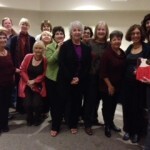 We all know the stereotype of a book club, that it’s a bunch of women who, under the pretense of meeting to discuss books, just socialize and drink. That hasn’t been my experience at all. People in book groups I’ve visited have been insightful readers. And some of their comments have moved and inspired me.
We all know the stereotype of a book club, that it’s a bunch of women who, under the pretense of meeting to discuss books, just socialize and drink. That hasn’t been my experience at all. People in book groups I’ve visited have been insightful readers. And some of their comments have moved and inspired me.
That happened when I met with the Burnout Sisters Book Club last week. The Burnout Sisters really were burned out. Residents of the San Diego suburb of Scripps Ranch, all of them lost their homes in a devastating 2003 fire. (We name our fires in California, and this one was the Cedar Fire.) They bonded initially over their mutual losses, then over a community-wide rebuilding project in which they shared the same builder to keep down costs. Now, 11 years later, they’ve rebuilt and, after living in rental places throughout San Diego County, they’re neighbors again.
In the discussion, one woman said she felt the title “The Tin Horse” was perfect, because she understood the importance of talismanic family objects; she had searched through the ashes of her home for hers, but hadn’t found any. Everyone nodded. They had all been there. Then another woman shared her story, and it felt like a gift:
In the ruins of her home, she found one special object, a ceramic bird her father had made. The bird was old and cracked, and she had kept it wrapped in newspaper. The blaze had refired the ceramic, and carbon from the burned paper had mended the cracks. When she found it, it was whole again.
This entry was posted
on Thursday, February 6th, 2014 at 8:34 pm and is filed under The Writing Life.
You can follow any responses to this entry through the RSS 2.0 feed.
Both comments and pings are currently closed.
 Thelma Virata de Castro says:
Thelma Virata de Castro says: February 6, 2014 at 11:43 pm
Beautiful.
Search for:
Subscribe Click Here to Subscribe to The Writing LifeRecent Posts Opening the Door to Self-Compassion Reading with Reverence – A Subversive Act If Not Hillel, Who? Rabbi Lawrence Kushner: A Dance Review Yikes, I’ve Been Studied! Recent CommentsSally on 7 Rules to Write By – #6: Choose your agent carefullyThelma Virata de Castro on The Wisdom of the Burnout SistersJanice on Happy Birthday to The Tin Horse!Diane Elliot on Happy Birthday to The Tin Horse!Thelma Virata de Castro on Happy Birthday to The Tin Horse!ArchivesJuly 2015January 2015September 2014August 2014June 2014May 2014April 2014March 2014February 2014January 2014December 2013November 2013October 2013September 2013August 2013July 2013June 2013May 2013April 2013March 2013February 2013January 2013December 2012November 2012CategoriesThe Writing Life
Rabbi Lawrence Kushner A Dance Review
 Rabbi Lawrence Kushner doesn’t bill himself as a dancer, and I didn’t go to see him Sunday in my role as a dance critic. But the rabbi’s got moves!
Rabbi Lawrence Kushner doesn’t bill himself as a dancer, and I didn’t go to see him Sunday in my role as a dance critic. But the rabbi’s got moves!
Rabbi Kushner was giving a talk in San Diego titled “Jewish Spirituality: It’s All God.” I was interested because I’ve read and loved several of his books, especially God was in this Place & I, i did not know, a multi-faceted riff on Jacob’s dream of the ladder between heaven and earth; it was one of a handful of key books and events that reconnected me with Judaism 20 years ago.
By the way, this is not the When Bad Things Happen to Good People Rabbi Kushner; that’s Harold. Rabbi Lawrence Kushner writes about Jewish mysticism with what feels like a Zen sensibility. His 17 titles include Eyes Remade for Wonder and I’m God; You’re Not: Observations on Organized Relation and Other Disguises of the Ego. You can hear him on the “On Being” radio show, talking about “Kabbalah and the Inner Life of God.”
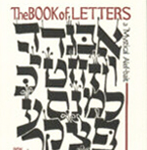 Having encountered Rabbi Kushner’s graceful wisdom and gentle humor on the page, I wasn’t surprised that he spoke in the tradition of Hassidic masters, teaching by telling stories. But I had no idea that he would dance his talk. As he spoke about how everything is connected, his hands wove filigrees in front of his face. He often spread his arms like wings; it’s a gesture any dancer recognizes as breath-expanding and heart-opening.
Having encountered Rabbi Kushner’s graceful wisdom and gentle humor on the page, I wasn’t surprised that he spoke in the tradition of Hassidic masters, teaching by telling stories. But I had no idea that he would dance his talk. As he spoke about how everything is connected, his hands wove filigrees in front of his face. He often spread his arms like wings; it’s a gesture any dancer recognizes as breath-expanding and heart-opening.
There was a lovely fluidity to his movements, a quality you see in people who practice contact improvisation or the Israeli form Gaga. What a perfect illustration of how everything is connected: heart, mind, body. And the connection involved not just his heart, body and mind, but ours.
It’s believed that watching other people move stimulates the muscles and nerves we’d use to make those movements in our own bodies. This phenomenon is called “kinesthetic empathy.” So when Rabbi Kushner winged out his arms, it created more space for our hearts and breath. We had new neural networks spinning as his hands described calligraphy in the air.
I thought of Rabbi Kushner’s guffaw-inducing tales as holy shtick, hilarious yet profound. And his dancing was Baryshnikov meets the Baal Shem Tov.
Tags: dance, Jewish, Kabbalah, Rabbi Lawrence Kushner
This entry was posted
on Tuesday, August 26th, 2014 at 7:01 pm and is filed under The Writing Life.
You can follow any responses to this entry through the RSS 2.0 feed.
Both comments and pings are currently closed.
Comments are closed.
Search for:Subscribe Click Here to Subscribe to The Writing LifeRecent Posts Opening the Door to Self-Compassion Reading with Reverence – A Subversive Act If Not Hillel, Who? Rabbi Lawrence Kushner: A Dance Review Yikes, I’ve Been Studied! Recent CommentsSally on 7 Rules to Write By – #6: Choose your agent carefullyThelma Virata de Castro on The Wisdom of the Burnout SistersJanice on Happy Birthday to The Tin Horse!Diane Elliot on Happy Birthday to The Tin Horse!Thelma Virata de Castro on Happy Birthday to The Tin Horse!ArchivesJuly 2015January 2015September 2014August 2014June 2014May 2014April 2014March 2014February 2014January 2014December 2013November 2013October 2013September 2013August 2013July 2013June 2013May 2013April 2013March 2013February 2013January 2013December 2012November 2012CategoriesThe Writing Life
Reading With Reverence A Subversive Act
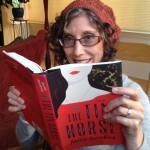 In honor of my birthday today, I want to share a wonderful, healing gift that I received.
In honor of my birthday today, I want to share a wonderful, healing gift that I received.
I recently met a very wise woman, Lori Thornley, who told me about the respectful, holy way in which she approaches a new book—a practice I think of as “reading with reverence.”
When Lori picks up a book in a bookstore or library, she begins by looking at the cover art and the author’s name. For a children’s book, she also looks at the name of the illustrator. She taught her kids to do this from the time they were little, and they got excited when they saw that same person had written a book and also illustrated it.
Then she looks at the author’s (and illustrator’s) photograph and biography, with a sense of gratitude for the work that’s going into creating the story. Next she looks at the dedication and acknowledgements, seeing the book’s creator(s) in a community of friends and supporters.
Only then does she start reading the story.
As a reader, I’m inspired to bring that kind of awareness to a new book—and yes, it seems more challenging with an e-book, but not impossible, especially if you resist the e-reader’s default mode of taking you to page 1 and instead start at the cover. By the way, reading with reverence does not require suspending critical judgment. But what about making a thoughtful comment, instead of just clicking x number of stars?
As a writer … Any of us who write may despair at the time, sweat, and angst that can go into even one paragraph, and how quickly—and at times dismissively—our work is read. Lori is a healer, and having this conversation felt like getting bodywork from someone who knows exactly where to touch, even places I didn’t realize were aching … until I felt the relief of having them massaged.
Reading with reverence also strikes me as wonderfully subversive.
It’s easy to see a book, particularly if it’s in a store with a bar-coded price on it, as just one more commodity. In Lori’s simple practice, which takes only a few minutes, she places herself—and the book and the author—outside of that framework of commodification. She makes a human connection between the person who created the world inside a book and herself as a reader about to enter that world. That’s a thrilling imaginative act.
This entry was posted
on Wednesday, January 7th, 2015 at 5:31 pm and is filed under The Writing Life.
You can follow any responses to this entry through the RSS 2.0 feed.
Both comments and pings are currently closed.
Comments are closed.
Search for:Subscribe Click Here to Subscribe to The Writing LifeRecent Posts Opening the Door to Self-Compassion Reading with Reverence – A Subversive Act If Not Hillel, Who? Rabbi Lawrence Kushner: A Dance Review Yikes, I’ve Been Studied! Recent CommentsSally on 7 Rules to Write By – #6: Choose your agent carefullyThelma Virata de Castro on The Wisdom of the Burnout SistersJanice on Happy Birthday to The Tin Horse!Diane Elliot on Happy Birthday to The Tin Horse!Thelma Virata de Castro on Happy Birthday to The Tin Horse!ArchivesJuly 2015January 2015September 2014August 2014June 2014May 2014April 2014March 2014February 2014January 2014December 2013November 2013October 2013September 2013August 2013July 2013June 2013May 2013April 2013March 2013February 2013January 2013December 2012November 2012CategoriesThe Writing Life
Stories Everywhere Crying Men A Seal Birth
 “We are narrative beings,” said Margaret Atwood, an author I revere, at the Los Angeles Times Book Festival last spring. Along with food, shelter, and sex, one of our most basic needs is to hear and create story. Fortunately, stories are everywhere. Two stories got their hooks into me last week, one where I had to fill in the pieces and another already fashioned into a magical narrative.
“We are narrative beings,” said Margaret Atwood, an author I revere, at the Los Angeles Times Book Festival last spring. Along with food, shelter, and sex, one of our most basic needs is to hear and create story. Fortunately, stories are everywhere. Two stories got their hooks into me last week, one where I had to fill in the pieces and another already fashioned into a magical narrative.
The story with missing pieces is about the crying men. Dropping off a friend at her condo, I saw a man sitting on the low brick wall outside, hugging his knees to his chest and all-out bawling, his sobs audible through the closed car window. The man was youngish, in his twenties or thirties, and a bit rough-looking, his fair skin sun-weathered as if he lived on the street. Possibly homeless, possibly mentally ill. And most likely harmless, though I took normal urban precautions and drove a little up the street to let my friend off.
The next day, I heard wailing and moaning coming from outside my condo building. I looked out and saw a man lying on the ground right under my second-story window. He didn’t move, he just lay on his back and moaned, his legs bent at an angle that I associate with chalk drawings of corpses in police dramas. Was he ill? Should I go out and talk to him? But part of the crying men story is my sense of vulnerability as a small woman. I thought of calling the police, but worried that the last thing this guy needed was to get picked up by cops. Fortunately, my husband was home. He went out, talked to the man, and gave him a hand to help him up. The man slurred and mumbled as if on drugs, but he was well enough to stand and walk down the street.
In our relentlessly upbeat culture, it’s rare to witness such public pain. I keep thinking about the men, hoping their lives will get better. Then there’s my storytelling impulse, which, like other fundamental drives, is not about compassion but about a hunger, in this case for meaning. The storyteller in me sees the appearance of two weeping men in two days in mythic terms, perhaps as a sign of a wounded masculine in a time of massive shifts in what it means to be male and female. Or maybe the story has to do with the wounds all of us carry coming to the surface. A psychic friend says we’re transitioning into the Age of Aquarius, and it will ultimately be great, but it’s going to be rocky getting there.
 The other story that came my way was about mythic creatures – elephant seals, massive animals that can weigh as much as 500 pounds. A friend and I discovered in conversation that we had both visited the seal rookery at Piedras Blancas, on the central coast of California between Cambria and San Simeon (the site of Hearst’s Castle). She happened to be there one day when all of the female seals formed a circle around another female. There was a gush of blood from the encircled female, and then she gave birth. The community of females stayed in their protective circle until the birth was complete. Afterward, the gulls performed their task in the ecosystem and ate the blood and afterbirth.
The other story that came my way was about mythic creatures – elephant seals, massive animals that can weigh as much as 500 pounds. A friend and I discovered in conversation that we had both visited the seal rookery at Piedras Blancas, on the central coast of California between Cambria and San Simeon (the site of Hearst’s Castle). She happened to be there one day when all of the female seals formed a circle around another female. There was a gush of blood from the encircled female, and then she gave birth. The community of females stayed in their protective circle until the birth was complete. Afterward, the gulls performed their task in the ecosystem and ate the blood and afterbirth.
I heard about the elephant seal birth in between seeing the first and second crying man, as if the author of the life-book I was reading last week wanted me to connect them. Thinking of the two stories as related chapters, it strikes me that the seals instinctively know what to do when a member of their community is weak and in need of protection. In our human community, it’s more complicated.
What stories are appearing in your life? How do you use narrative to make meaning?
Tags: elephant seals, myth, narrative, storytelling
This entry was posted
on Tuesday, October 29th, 2013 at 10:00 pm and is filed under The Writing Life.
You can follow any responses to this entry through the RSS 2.0 feed.
Both comments and pings are currently closed.
November 3, 2013 at 12:35 am
Hi Janice,
Here in Antelope (a tad north of Sacramento) we have a large Russian and Ukrainian community. While in the grocery store, I hear Russian spoken like I used to hear Spanish in Chula Vista-all over the place. I also have noticed the clothing the Russian women wear and how their children behave. Stories begin to swirl in my head like mad. People watching in Winco was where my muse returned! There are so many every day things that contribute to our writing. It’s all ripe fruit for the picking.
Thanks for your wonderful blog. I miss you and all my San Diego writer buddies!
Cheers,
Carolyn
November 3, 2013 at 4:01 pm
Hi, Carolyn,
Miss you, too. Thank you for a great story … and from Antelope, what a wonderful name. So glad to hear your muse has returned – you wonder what those muses are doing when they’re on the lam. Do they have a place where they all hang out?
Regards,
Janice
 Jennifer MacLaggan says:
Jennifer MacLaggan says: November 3, 2013 at 7:55 am
Interesting scenarios you have revealed. What comes to mind is the way females (vs males) seem to unabashedly support one another. You see the “circling of the wagons” a bit more with females. Humans, seals…you name it..
The story about the men crying was just sad…because you know that they most likely will not get the care that they need. To be nutured…and helped.
November 3, 2013 at 4:09 pm
Hi, Jennifer,
To me, the hopeful aspect of the crying men story is the thought that maybe men in general are becoming willing to show their vulnerability … which is part of why women are able to create community.
See you at Mission Hills Books & Collectibles next Sunday!
Janice
Search for:
Subscribe Click Here to Subscribe to The Writing LifeRecent Posts Opening the Door to Self-Compassion Reading with Reverence – A Subversive Act If Not Hillel, Who? Rabbi Lawrence Kushner: A Dance Review Yikes, I’ve Been Studied! Recent CommentsSally on 7 Rules to Write By – #6: Choose your agent carefullyThelma Virata de Castro on The Wisdom of the Burnout SistersJanice on Happy Birthday to The Tin Horse!Diane Elliot on Happy Birthday to The Tin Horse!Thelma Virata de Castro on Happy Birthday to The Tin Horse!ArchivesJuly 2015January 2015September 2014August 2014June 2014May 2014April 2014March 2014February 2014January 2014December 2013November 2013October 2013September 2013August 2013July 2013June 2013May 2013April 2013March 2013February 2013January 2013December 2012November 2012CategoriesThe Writing Life
Opening The Door To Self Compassion
 Wherever you go, there you are. Where I have gone is a cottage in Ashland, Oregon. My husband and I are doing a month-long stay here, seeing plays at the Oregon Shakespeare Festival and spending most of our time giving ourselves a writing retreat—I’m partway through a novel, and he’s working on a play.
Wherever you go, there you are. Where I have gone is a cottage in Ashland, Oregon. My husband and I are doing a month-long stay here, seeing plays at the Oregon Shakespeare Festival and spending most of our time giving ourselves a writing retreat—I’m partway through a novel, and he’s working on a play.
Our Ashland home, Quan Yin Cottage, is named for the Buddhist goddess of compassion. It’s at the Ashland Zen Center, and in the two weeks we’ve been here, Zen aphorisms have come to mind. Especially, “Wherever you go, there you are.” I thought of it initially on my second day here, when I was starting an entry in my novel diary. As I typed the date, July 1, I heard the words in my head, “Damn, I’m slow”—a lead-in to saying that I’d hoped, in this precious time I’m dedicating to the novel, the pages would pour out of me, but instead I was proceeding at my usual plod.
Wherever I go, if I try to do any writing, that self-flagellating voice comes along. I’m sure this is no surprise to anyone who writes. Anne Lamott in Bird By Bird, my Bible for writing and life, talks about Radio Station KFKD blasting in every writer’s mind. And a recent “Bookends” column in the New York Times Book Review posed the question: “Is self-loathing a requirement for writers?”
I had gone 900 miles from my home in San Diego, a two-day drive up the entire length of California. And there I was, whip in hand.
This time, though, the words in my head didn’t make it to my fingers. Instead, I wrote, “What if, in this holy place, I accept my process? Accept myself?”
 A word about holy places. I happen to believe places have their own energy, both physically and from what happens there. The Zen Center is relatively small and sits so discreetly on the street that the first few days we kept driving past the entrance; we’ve learned to spot it by the lavender bushes on either side of the driveway. There are three buildings—the main house and behind it the cottage and a craft building—at the front of the property. They’re painted a soft yellow and surrounded by shade trees, bushes, and flowers. Past the buildings are a towering cottonwood (my husband the mathematician estimates it’s 100 feet tall) and a flower garden with daisies, sunflowers, and lots of lavender. Farthest back, you get to berry bushes, mostly marionberries but also some raspberries and a little gold berry, and in a back corner are beehives.
A word about holy places. I happen to believe places have their own energy, both physically and from what happens there. The Zen Center is relatively small and sits so discreetly on the street that the first few days we kept driving past the entrance; we’ve learned to spot it by the lavender bushes on either side of the driveway. There are three buildings—the main house and behind it the cottage and a craft building—at the front of the property. They’re painted a soft yellow and surrounded by shade trees, bushes, and flowers. Past the buildings are a towering cottonwood (my husband the mathematician estimates it’s 100 feet tall) and a flower garden with daisies, sunflowers, and lots of lavender. Farthest back, you get to berry bushes, mostly marionberries but also some raspberries and a little gold berry, and in a back corner are beehives.
All of it is tended with obvious care. The house is immaculate and in good repair, someone has thoughtfully equipped the kitchen with all the basics we need (and a request for a larger salad bowl was met in seconds). And tending the grounds must be part of the spiritual practice: programs were on hiatus our first two weeks, and the only time anyone entered the yard, s/he was coming to water and prune—moving quietly, clearly mindful about disturbing a woman with a laptop.
Spread through the grounds are inviting benches and signs of devotion: stone statues of Buddha and, in front of our cottage, a serene Quan Yin.
The goddess of compassion visited me again last week. Late in the day, sitting at the desk I placed in front of the French windows, I was about to write, “Major farting around today.” But I stopped and considered: My novel deals with five members of a family. I had just finished a chapter focused on one family member, and I was pretty sure which one I wanted to feature in the next chapter—Rocky Rochman, the 27-year-old who finds God, which is pretty weird for him and his secular family—but I didn’t know what I was going to do with him. As a way in, I had read through earlier Rocky chapters that day and even found things I liked in them. But I had written nothing. Thus, naturally, the impulse to say I’d been farting around.
I decided to sit back and allow Rocky’s story to emerge. As another aphorism counsels, “Sitting quietly, doing nothing, spring comes, and grass grows by itself.” Then it did. Suddenly I knew Rocky’s next step into the waters of belief—he’d start to go by his Hebrew name, which was … I Googled and found a name that so tickled me I laughed out loud: Nachman. I loved the silliness of “ Nachman Rochman.” Plus, that name would connect Rocky to the revered Hassidic Rabbi, Nachman of Bratzlav. And in the next few days, Rabbi Nachman references appeared like gifts from the universe; I went to a class where the teacher quoted Nachman and to a service where the prayerbook included Rabbi Nachman’s Rules for Joy. For instance, “Nothing is as liberating as joy. It frees the mind and fills it with tranquility.”
Which brings me back to self-compassion. Happy as I am that, after I refrained from beating myself up, the juices started flowing, the important shift wasn’t the flood of ideas. It was that I treated myself with respect and kindness.
Wherever I go, there I am. But maybe being in a familiar place brings out only the most familiar parts of myself, and it took coming here to find my inner Quan Yin. I hope she’ll make the journey home with me.
This entry was posted
on Tuesday, July 14th, 2015 at 8:10 pm and is filed under The Writing Life.
You can follow any responses to this entry through the RSS 2.0 feed.
Both comments and pings are currently closed.
Comments are closed.
Search for:Subscribe Click Here to Subscribe to The Writing LifeRecent Posts Opening the Door to Self-Compassion Reading with Reverence – A Subversive Act If Not Hillel, Who? Rabbi Lawrence Kushner: A Dance Review Yikes, I’ve Been Studied! Recent CommentsSally on 7 Rules to Write By – #6: Choose your agent carefullyThelma Virata de Castro on The Wisdom of the Burnout SistersJanice on Happy Birthday to The Tin Horse!Diane Elliot on Happy Birthday to The Tin Horse!Thelma Virata de Castro on Happy Birthday to The Tin Horse!ArchivesJuly 2015January 2015September 2014August 2014June 2014May 2014April 2014March 2014February 2014January 2014December 2013November 2013October 2013September 2013August 2013July 2013June 2013May 2013April 2013March 2013February 2013January 2013December 2012November 2012CategoriesThe Writing Life
Pioneer Jews
 My nominee for one of the most intriguing book titles ever is “Pioneer Jews.” It is not an oxymoron! As this deeply researched, terrifically readable history by Harriet and Fred Rochlin makes clear, Jewish immigrants to America in the 19th century didn’t just settle in New York or Chicago. Many followed the great migration to the West. Jews rode the range on cattle ranches – I kid you not, one of my favorite features in the book is a two-page spread of cattle brands used by Jewish ranchers. Jews wore lawmen’s badges – Emil Harris was a Los Angeles police chief known who, the Rochlins write, “captured bank robbers, solved murders and larcenies, controlled the flourishing opium dens and brothels, and cracked down on juvenile delinquency.”
My nominee for one of the most intriguing book titles ever is “Pioneer Jews.” It is not an oxymoron! As this deeply researched, terrifically readable history by Harriet and Fred Rochlin makes clear, Jewish immigrants to America in the 19th century didn’t just settle in New York or Chicago. Many followed the great migration to the West. Jews rode the range on cattle ranches – I kid you not, one of my favorite features in the book is a two-page spread of cattle brands used by Jewish ranchers. Jews wore lawmen’s badges – Emil Harris was a Los Angeles police chief known who, the Rochlins write, “captured bank robbers, solved murders and larcenies, controlled the flourishing opium dens and brothels, and cracked down on juvenile delinquency.”
As a reviewer wrote in the Chicago Sun-Times when “Pioneer Jews” first came out in 1984, “When people think of the Jewish immigrant experience, it’s usually the Lower East Side of New York that comes to mind. But, in fact, thousands of Jews lived in western mining towns and on ranches and trading posts in the late nineteenth century. In this colorful history of Jewish settlers in the West . . . that stereotype of the urban Jew is vigorously and even exuberantly rejected.”
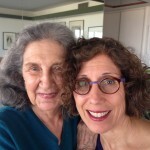 “Exuberance” is a quality that characterizes Harriet Rochlin herself. I read “Pioneer Jews” when I started my research for “The Tin Horse” and discovered that Harriet had grown up in my novel’s setting, the Los Angeles neighborhood of Boyle Heights in the 1920s and 30s. I sent her a note: would she be willing to talk to me? She generously shared her time, information, and enthusiasm. She was a wonderful source of information, offering both the you-are-there immediacy of having lived in Boyle Heights and the historian’s skill of seeing things in a larger perspective. And, despite being busy with her own book projects, she always responded promptly and thoroughly to questions I emailed her. She even shared her family photographs for my video; the shot of two girls, when I talk about Elaine and Barbara, is actually a photo of Harriet and her sister!
“Exuberance” is a quality that characterizes Harriet Rochlin herself. I read “Pioneer Jews” when I started my research for “The Tin Horse” and discovered that Harriet had grown up in my novel’s setting, the Los Angeles neighborhood of Boyle Heights in the 1920s and 30s. I sent her a note: would she be willing to talk to me? She generously shared her time, information, and enthusiasm. She was a wonderful source of information, offering both the you-are-there immediacy of having lived in Boyle Heights and the historian’s skill of seeing things in a larger perspective. And, despite being busy with her own book projects, she always responded promptly and thoroughly to questions I emailed her. She even shared her family photographs for my video; the shot of two girls, when I talk about Elaine and Barbara, is actually a photo of Harriet and her sister!
Over the eight years in which I worked on “The Tin Horse,” Harriet has become a friend and treasured role model. From everything she’s told me about Fred’s joie de vivre and creativity, I’m so sorry that I didn’t have the chance to meet him; he passed away in 2002.
Harriet has just completed exhaustive work to update the rights information for the 219 historical photos in the book and has released a new edition of this outstanding book. Here’s where you can buy it!
Tags: Boyle Heights, Harriet Rochlin, Jews in the West, Pioneer Jews
This entry was posted
on Monday, March 3rd, 2014 at 10:14 pm and is filed under The Writing Life.
You can follow any responses to this entry through the RSS 2.0 feed.
Both comments and pings are currently closed.
Comments are closed.
Search for:Subscribe Click Here to Subscribe to The Writing LifeRecent Posts Opening the Door to Self-Compassion Reading with Reverence – A Subversive Act If Not Hillel, Who? Rabbi Lawrence Kushner: A Dance Review Yikes, I’ve Been Studied! Recent CommentsSally on 7 Rules to Write By – #6: Choose your agent carefullyThelma Virata de Castro on The Wisdom of the Burnout SistersJanice on Happy Birthday to The Tin Horse!Diane Elliot on Happy Birthday to The Tin Horse!Thelma Virata de Castro on Happy Birthday to The Tin Horse!ArchivesJuly 2015January 2015September 2014August 2014June 2014May 2014April 2014March 2014February 2014January 2014December 2013November 2013October 2013September 2013August 2013July 2013June 2013May 2013April 2013March 2013February 2013January 2013December 2012November 2012CategoriesThe Writing Life



